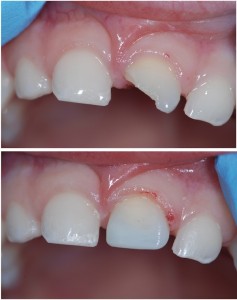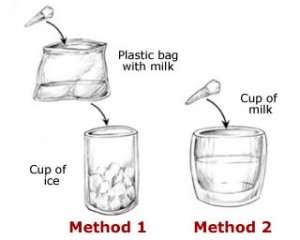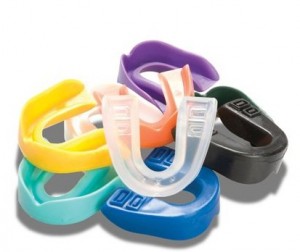Dental Trauma in Children
Taking the Drama Out of Dental Trauma in Children
As spring quickly approaches and the weather starts to warm up, the amount of time our kids spend riding bikes, skateboarding and playing outside increases. Along with the bruised knees and scraped elbows that come with these high-energy activities, the risk for dental trauma also increases. Dental trauma involves damage to the teeth and the surrounding oral structures and can present in many different forms. Many milder forms of dental trauma actually go unnoticed by parents and are only found in subsequent dental examinations. The most commonly affected teeth in dental trauma are the upper front teeth and damage to them can include chipping, loosening and displacement, or avulsion.

Fractured Teeth in Children
Teeth are made of three distinct layers, and when teeth are chipped, the inner layers may become exposed. It is important to have chipped teeth evaluated in order to determine how deep the fracture is. Some mild fractures can simply be monitored or smoothed, while others may require more extensive treatment. If the fractured piece is large and can be located, then it should be brought to the Dentist for possible re-bonding.
Loosened Teeth in Children
Treatment for teeth that are loosened or displaced depends on the severity of the injury. Mild displacement or loosening can usually be monitored, but more severe injury may require treatment including possible extraction of the tooth. Although teeth that are mildly loosened will many times tighten up over time, it is important to continue to have these teeth evaluated as infections may start later. Possible signs of infection can include color change, an abscess or “gum boil”, swelling, increased mobility, or discomfort. X-rays are often a necessary and valuable tool in determining the health and prognosis of a traumatized tooth.
 Avulsed (Knocked Out) Teeth in Children
Avulsed (Knocked Out) Teeth in Children
One of the more severe forms of dental trauma is avulsion. Avulsion is when the tooth is knocked completely out of the socket. Time is the most important factor for the success of an avulsed permanent adult tooth. The sooner a permanent tooth can be re-implanted, the better the prognosis. If a permanent tooth is avulsed it should be placed in a container of milk (to prevent the tooth from drying out) and the child should be brought to the Dentist immediately. Baby teeth should not be re-implanted because of risk of infection or damage to underlying permanent adult teeth.

Preventing Dental Trauma in Children
The best treatment for trauma is prevention, and there are many ways to help prevent dental trauma. Children who are just learning to walk or run should be monitored closely as they are often prone to stumbling and their height makes it easy for them to bump into corners of chairs or tables. In addition, all children involved in high contact sports should wear protective mouth guards. Research has shown that the use of protective mouth guards significantly decreases the occurrence and severity of dental trauma. With these tips in mind, here’s to a fun and safe spring.
